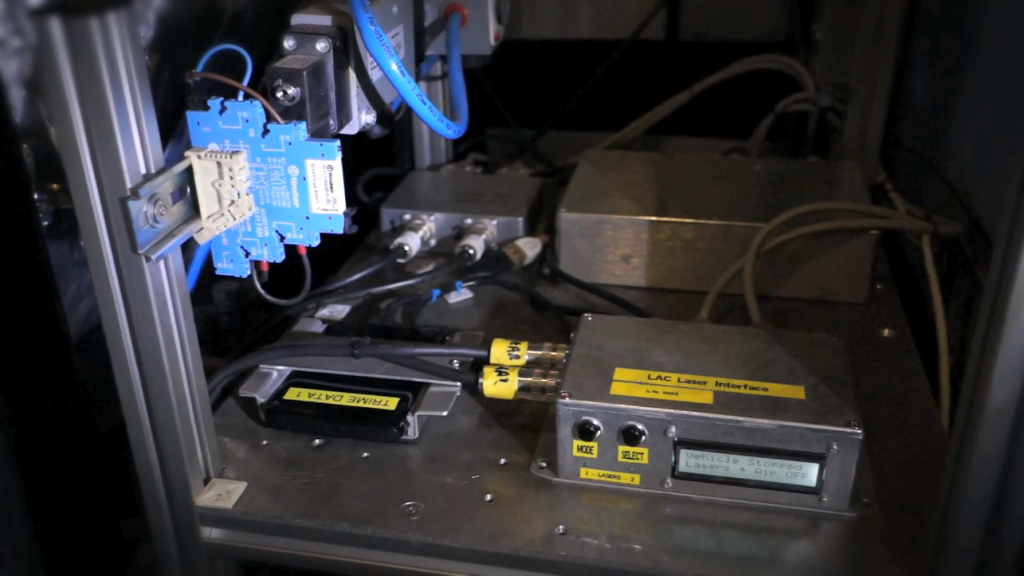Field integration
(Managed by Prof. Clive Roberts)
Introduction
Support to railway track is provided by a number of foundation layers, primarily the sub-base, sub-ballast and ballast. One of the key issues for long-term stability of track geometry is ensuring appropriate and uniform track stiffness. Inconsistent or inappropriate support will accelerate track component degradation. This in turn will lead to the premature failure of critical components such as switches, as well as rail fatigue and increased vehicle damage and wear.
One key problem area is where there is a change in track support stiffness due to the track passing over a fixed structure. To mitigate the effect, transition zones are designed and built with the aim of providing a gradual change in track support stiffness between the normal line and the structure. However, renewal and maintenance costs are disproportionately high on transition zones, indicating that current design procedures are ineffective and there is no coherent understanding of the mechanisms involved. Switches and crossings suffer from similar support problems, due mainly to the practical difficulties of maintaining the substructure underneath a complex mechanism that is particularly sensitive to differential movements. A poor switch substructure leads to high levels of vibration in the switch and drive mechanism. These vibrations are the root cause of a significant number of failures and hence train delays.
Further problems arise with hard substructures where wave propagation can become significant, generating substantial noise and large vibrations. These are not only a potential environmental nuisance, but can also accelerate the deterioration of track geometry.
Initial objectives
- To identify the extent and likely causes of problems at critical zones (points and transitions), by means of data review and additional field monitoring, and using data from WAs 1, 2 and 3
- To assess the potential effectiveness of the interventions and component improvements identified in WA2 in reducing maintenance at critical zones, by means of appropriate numerical modelling
- Potentially, to assess the effectiveness of improvement and remediation methods in practice by exploiting opportunities to carry out further field monitoring.
Methods
Previous work has led to the development of railway condition monitoring systems to detect incipient faults in subsystems (point machines, doors, etc.), provide in-service dynamic measurements and identify critical faults in rails, as well as monitoring techniques to measure dynamic ground response1 and sub-base stiffness. Initially, this work will be extended to understand further the deterioration of track geometry in critical zones and how the onset of certain failure modes in switches is related to poor sub-base performance. The approaches developed will then be used to assess the potential for improvement offered by innovations identified in WAs 2 and 3.
Previous work in track geometry and ground response measurement using train bogie mounted inertial measurement and track mounted velocity measurements will be extended to
- assess the degradation of track geometry over time at transitions and other critical zones
- quantify the forces induced in switches during train passage
- provide a qualitative measurement of track stiffness – this is thought to be possible using continuous in-service measurements from vehicles with known, slightly out-of-round wheels.
Previous work in switch monitoring has considered approaches for detecting and diagnosing faults, but has not addressed the root causes. These approaches will be enhanced to incorporate measurements of dynamic forces, and an appropriate instrumented switch will be developed for field monitoring.
Methods will include a review of literature and field data; further field monitoring and investigation of current problem sites; mathematical and numerical modelling; and potentially the instrumentation of track systems (plain line and switches/ crossings) and vehicles to assess improvements in ride and system dynamic behaviour arising from the interventions made.
Key outputs, impacts and inputs to other Work Areas
- understanding of the extent and likely causes of problems at critical zones
- assessment of the possible (and, potentially, the actual) effectiveness of interventions and component improvements in reducing maintenance requirements at critical zones (input to WA 6)
- improved numerical modelling techniques for transition and other critical zones (input to WA 6)
- improved approaches for vehicle and track instrumentation for monitoring transition zone and point performance.
Progress report 27thJune 2014
